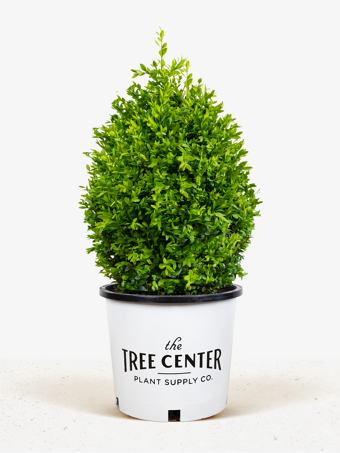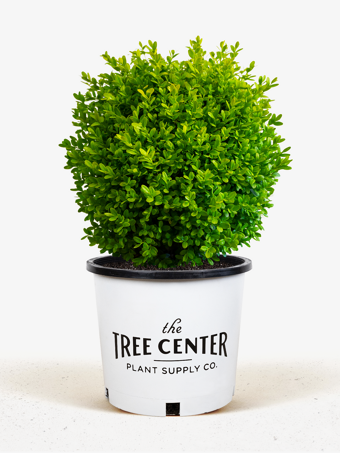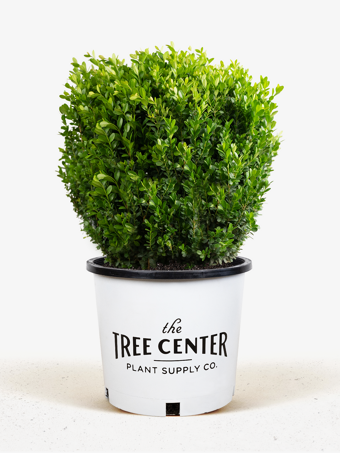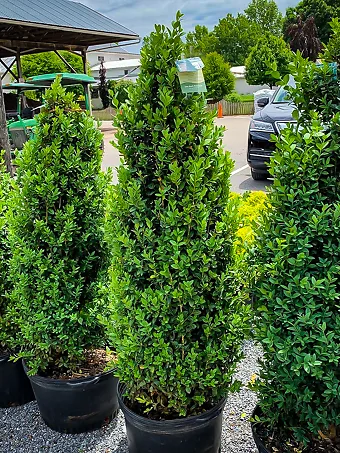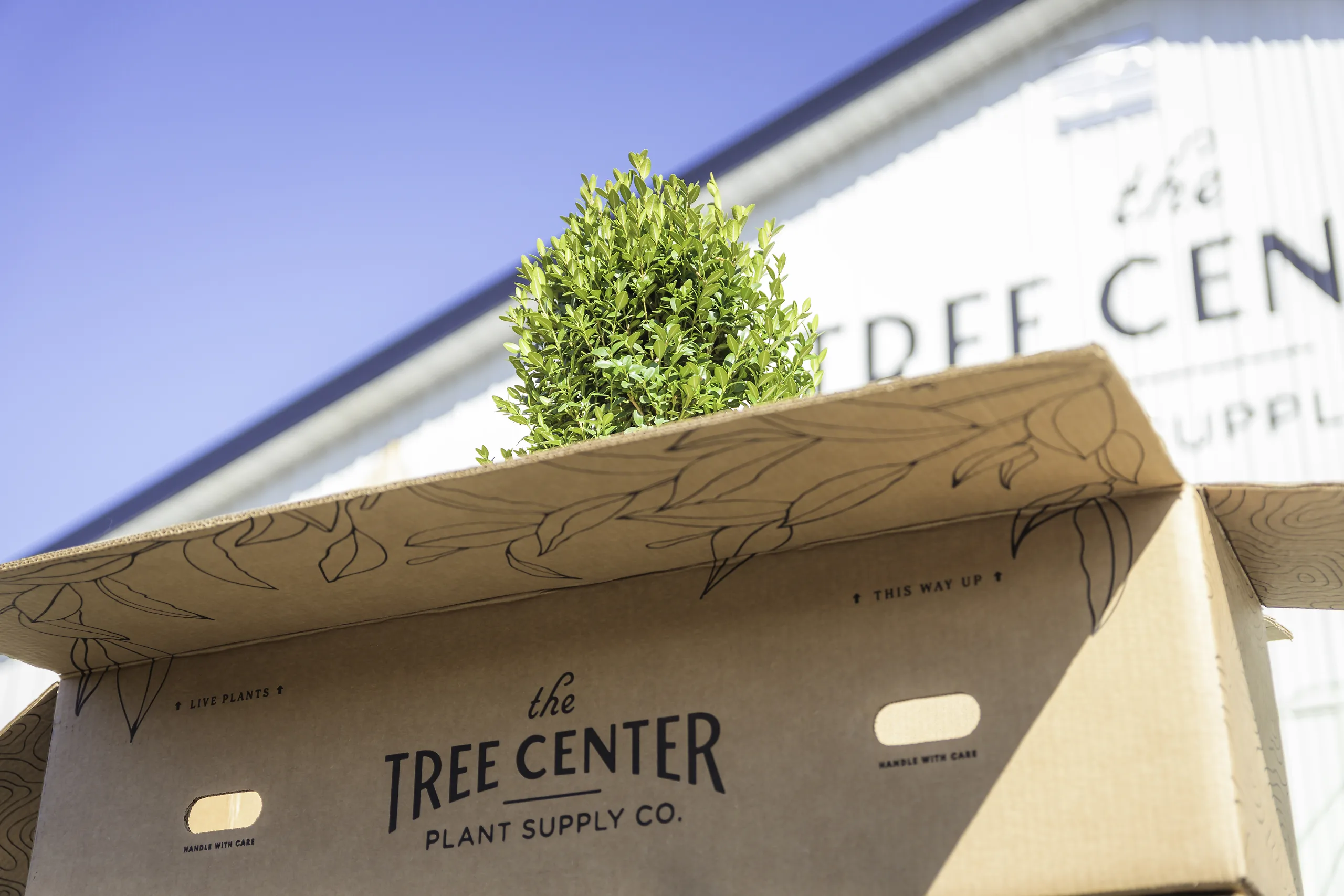
Written by s • Choosing the Right Boxwood for Your Garden
Boxwood is undoubtedly the most functional plant in garden history, as well as being attractive and easy to grow in sun or shade, and in a range of soil types. It has endless uses around the garden, but it is especially useful for making geometric shapes and hedges, as it thrives on regular trimming. It can be clipped into balls, cones, cubes and a whole host of shapes to decorate your garden. These add interest and structure to the garden, giving the eye firm shapes to hold onto in the chaos irregularity often seen in disorganized gardens. Using hedges of all sizes to create simple geometry, such as squares and circles, on the ground, has the same effect on the anarchy of plants as a frame does around a Jackson Pollock painting. It brings control and restraint, and shows the human hand in the garden.
However, for new gardeners the wide variety of boxwood offered by nurseries can leave them confused and wondering what to do, or worse, buying the wrong plant. Let’s look at boxwood, and bring some order to them. Choosing the right plant is easy, once you know a little about the main types.
American and English boxwood
There are two main kinds of boxwood used in gardens, as well as hybrids between these two main plants. The first and probably most important is the European boxwood, Buxus sempervirens. ‘Semper-virens’ means ‘always-green’ and this is an evergreen bush with small, round leaves. Perhaps because it was brought to America as long ago as 1653, it is often called American boxwood. This shrub can grow to 10 feet tall, and is a great choice for a taller hedge, or for taller clipped specimens. The English boxwood is a dwarf variety of the same species, Buxus sempervirens ‘Suffruticosa’. It has denser growth, is slower growing and takes years to reach 3 or 4 feet in height. It is the perfect choice for a low hedge, 8 to 18 inches tall, that could edge flower beds or pathways. It can also be clipped into small globes.
The problem with European boxwood is that it is not especially resistant to either cold or heat, so it grows best in zones 6 to 8. If you live in those zones, these are great plants, and you hardly need to look further to choose suitable boxwood.
Asian boxwood
If you live in colder areas, or hotter ones, then looking across the Pacific to Asia will provide more suitable plants. With these plants, you may become confused by names, and think there are more of them than there really are. There are two main species of boxwood in Asia. The first is Japanese Boxwood, Buxus microphylla, which is usually available in dwarf forms, growing slowly to just a few feet in height. It is also known as littleleaf boxwood, and it is the most reliable form for hot areas, growing well in zones 9 and 10, although it is also hardy to zone 6.
The second Asian species of importance is the Korean, or Chinese boxwood. Today it is correctly known as Buxus sinica var. insularis, but in older material it is often listed as Buxus microphylla var. koreana. These two names in fact refer to the same plant, but their usage creates a lot of confusion. This plant is much more resistant to cold than both the Japanese and European boxwood, and it will stay green and healthy all the way down to minus 20 or 25 degrees Fahrenheit. One particular variety we prefer is the ‘Winter Gem‘. This makes it easy for gardeners to grow reliable boxwood in zone 5 and even in milder parts of zone 4. The foliage of the wild plant is a duller green than the English boxwood, and the growth is slower, but in improved varieties like ‘Wintergreen’ the plants are dense, with good winter foliage and they are very hardy. For low hedges in cold areas, ‘Franklin’s Gem’ is hard to beat.
Hybrid boxwood
In 1955 Sheridan Nurseries, a grower in Montreal, Canada, produced seed from a cross between an English and a Korean boxwood. They grew 50 seedlings and then produced 100 plants of each from cuttings, to evaluate them. They grew as fast as English boxwood, with the same attractive glossy leaves, but they were as hardy as the Korean boxwood. After years of evaluation by the nursery and the Canadian Central Experimental Farm in chilly Ottawa, the best four were named and released over several years. ‘Green Mountain’ is tall growing and upright, ideal for pyramids and cones, while ‘Green Velvet Boxwood’ is vigorous and fast-growing, for hedges and balls. ‘Green Gem’ is naturally round for balls and ‘Green Mound’ is smaller and ideal for low hedges. These plants have become the standard for all colder climates and are very popular with gardeners in cold, snowy areas.
Which One to Choose?
With all the varieties available, it is easy to navigate towards the ideal plant for your purposes. Do you want plants for taller pyramids and hedges? Then choose the American Boxwood, or ‘Green Mountain’ if you garden in a colder place. Are you looking for low hedges or balls? Then English Boxwood, or ‘Franklin’s Gem’, ‘Green Gem or ‘Green Mound’ will fit the bill, depending on where you live. Pick Japanese boxwood or American boxwood for warmer states, or the very popular ‘Green Velvet’ as a general-purpose hedging or specimen variety.
Whichever type of boxwood you decide to grow, good soil preparation and attention to watering will make sure your new plants get off to a flying start and soon get to work bringing order and structure to your garden. Boxwood plants, whatever their type, may be functional, but they are beautiful too, and they have a place in every garden.
